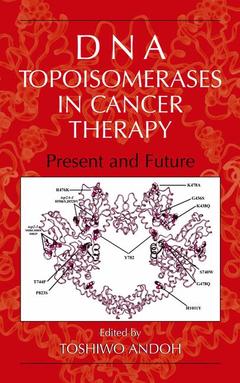Description
DNA Topoisomerases in Cancer Therapy, Softcover reprint of the original 1st ed. 2003
Present and Future
Coordinator: Andoh Toshiwo
Language: English
Subjects for DNA Topoisomerases in Cancer Therapy:
Keywords
DNA; biology; cancer; cell; cell death; enzyme; enzymes; molecular biology; pharmacology; protein; resistance; toxicology
Publication date: 10-2012
202 p. · 15.5x23.5 cm · Paperback
Publication date: 04-2003
200 p. · Hardback
Description
/li>Contents
/li>Comment
/li>
In the mid 80's type I and II enzymes were found to be the intracellular targets of a number of efficacious anticancer drugs such as doxorubicin, mitoxantrone, etoposide and camptothecin as a result of a continued efforts of many investigators, especially Leroy Liu and his collaborators at Johns Hopkins University. Readers will find a series of chapters written by researchers actively engaged in the expanding field of topoisomerase and their inhibitors. The series of chapters cover review articles on pharmacology and the molecular mechanism of topoisomerase I- and II-targeting anticancer drugs in mammals and in the yeast Saccharomyces cerevisiae, which has proved to be a superb model organism for studies of anticancer drugs. This volume compiles up-to-date information on the topoisomerase-targeting compounds in clinical and preclinical development as a useful and important reference book for students and researchers in the field of pharmacology, toxicology, oncology and molecular biology.
Commemorates the 30th anniversary of the discovery in 1971 of the first DNA topoisomerases, i.e topoisomerase I in E. coli
Pioneer Jim Wang at Harvard University, contributed an article: `Reflections on an accidental discovery' of the enzyme
These books may interest you

DNA Topoisomerases and Cancer 216.90 €

Camptothecins in Cancer Therapy 232.09 €


